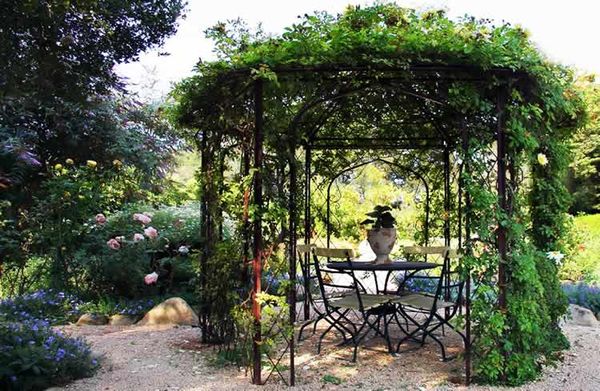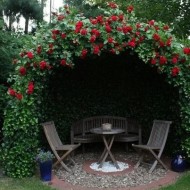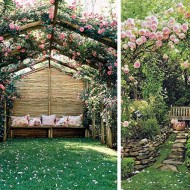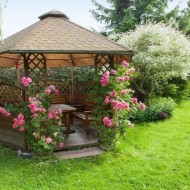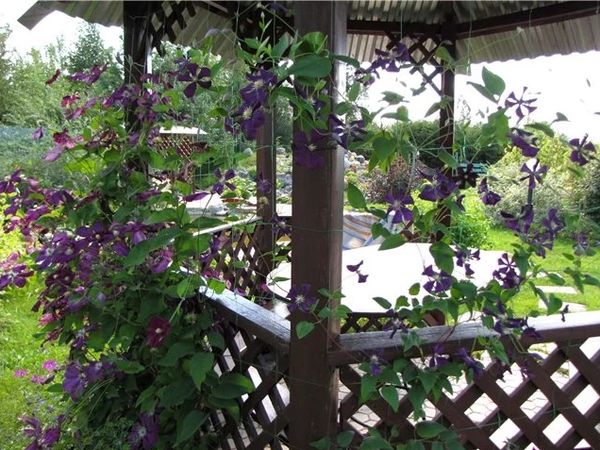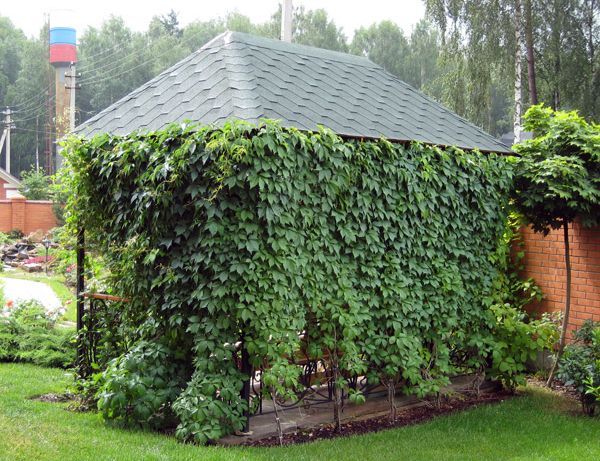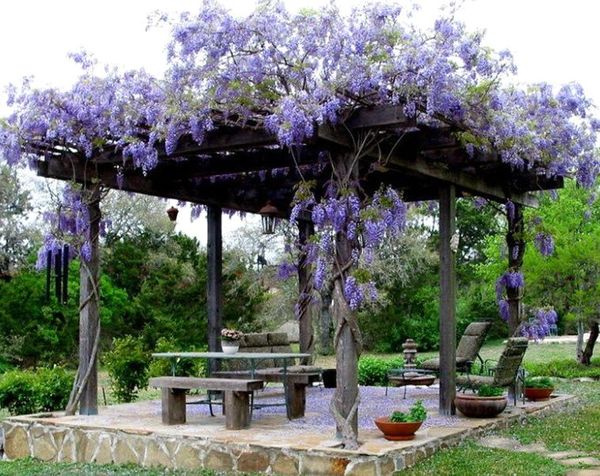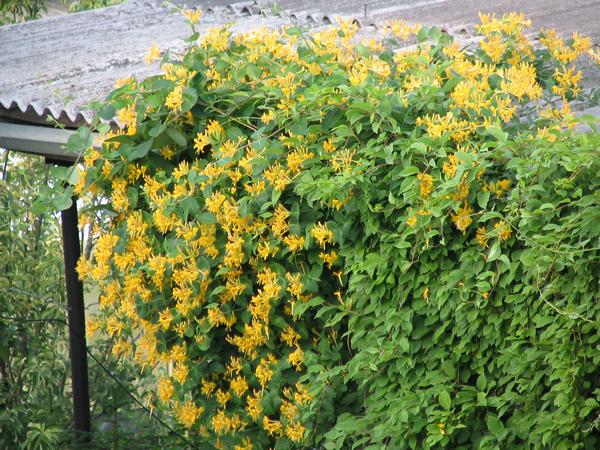5 most beautiful climbing plants to decorate a gazebo
Content
Why are vines planted
Vines are a versatile arbor plant. They not only give the building a soft pastoral look, but also perform practical functions. A living canvas of greenery, which the vines create, gives the structure a cozier look, softens bulky sharp details and lines, and creates the shade necessary on a hot day. Plants with a dense crown and large leaves provide excellent protection from light rainfall and wind. Without landscaping, the gazebo has a somewhat alienated look and can harmoniously fit only into a purely minimalist style or high-tech. Flowers also create a comfortable atmosphere of solitude and unity with nature.
The choice of vines must be approached very responsibly, taking into account all the details of the style in which the structure is made. According to the peculiarities of the gazebo (open, closed, with weaving, forged details), you need to select the density of the crown, the size of the leaves and flowers, size, durability, decorative properties, resistance to various weather conditions.
It is imperative to take into account how much waste the plant gives, because constantly falling leaves or pollen does little to maintain order and comfort. It is also recommended to plant perennial varieties that retain their decorative appearance for at least several years. For cold regions, you need to choose winter-hardy varieties.
Vines are usually grown from seedlings purchased from nurseries. It is easy to plant a culture with your own hands, but growing seedlings from seeds is a painstaking and time-consuming process. For planting, seedlings with a well-developed root system are used, at least half a meter long, not affected by diseases and pests, not mechanically damaged.
You can choose any fertile soil, but always enriched with phosphorus fertilizers. A hole is dug at a distance of 30–40 cm from the support, about 50 cm wide and 60 to 80 cm deep. After placing the plant and tamping the soil, the plant is abundantly watered and mulched. Tie the vine to a support as it grows.
Video "The use of climbing plants and supports for them"
In this video, you will learn how to use climbing plants and what supports are needed for them.
Most popular types
For gardening gazebos, fast-growing weaving varieties are usually chosen, which have a number of advantages over others:
- a high degree of frost resistance, which is important in the vastness of Russia;
- lack of tendency to defeat fungal infections and other diseases, as well as resistance to pest attacks;
- the ability to maintain a decorative appearance during long-term cultivation in one place.
It is possible that some have minor flaws that do not appear with proper care.
Climbing roses
There are not many plants that can compete with the rose. The varietal variety of colors can satisfy the requirements of any taste and design.But roses are distinguished not only by the beauty of flowers, but also by the ability to maintain a decorative appearance for a long time by the rapid growth of shoots up to 15 m.There are certain features in growing roses - they are demanding on the composition of the soil and do not have a high degree of frost resistance, therefore they need shelter. However, flexible curly shoots give many flowers that adorn the plant until late autumn. And the pleasant aroma spreading around makes small imperfections insignificant at all.
Clematis
Bright lilac or pink large clematis flowers are visible from afar. He can easily wrap around a wide arch and a large arbor. The lightness of the shoots, which seem to float in the air, give the whole structure a visual simplicity and weightlessness. However, young plants do not tolerate bright sun well and need shading. It also needs to be weeded and loosened regularly, fertilized and monitored by the garter. It does not tolerate clematis and excessive moisture, so it should be watered evenly and infrequently. It is better to cover for the winter.
Maiden grapes
Wild or girlish grapes adorn the gazebo with almost the entire basic color palette. Its large leaves create shade and coolness, decorative berries resemble a kind of decoration and are the highlight of the image. Grapes tolerate cold winters well and are unpretentious to the place and soil. However, in the first year, it must be watered abundantly, and in the future, regular pruning is carried out.
Wisteria
New varieties of subtropical wisteria can withstand very hard frosts. And its inflorescences of not imaginatively delicate shades give the heaviest structure lightness and create the impression of a fluffy cloud. The flower needs regular watering to keep the soil slightly moist at all times. Fertilizing with mineral and organic fertilizers is also important. Shoots must be constantly guided and tied.
Honeysuckle
Three varieties of honeysuckle are used to decorate garden structures: honeysuckle, curly, Brown. It can be quite compact and voluminous. It does not need special care, it is distinguished by its endurance, and flowering specimens delight with abundant and long flowering. The fruits perfectly complement the overall decorative ensemble, the top note of which is the evening aroma.
Other plant
You can opt for other plants that are better suited to your case and more in line with your taste preferences. So, actinidia will not only decorate the gazebo, but will also delight you with fruits that taste like kiwi. An excellent option for lovers of tasty and healthy decorations will be a decorative pumpkin, which gives a good harvest in autumn. Another wonderful, but so far rare option is akebia, with fruits similar to mango and plum. The fruits are delicious and soft. You should not neglect ordinary grapes, which will perfectly decorate and shade the space in summer, and will delight you with sweet bunches in autumn.
Small flowers and powerful shoots of the Baldzhuan mountaineer will be a great addition to gazebos in sunny southern regions. A universal option is ivy. Its luxurious glossy leaves and long shoots will cover designs of any size with bizarre patterns.
Lovers of exotic will like echinocytis (or "mad cucumber"), which is sometimes mistaken for a weed. Its quirky fruits, light sweet aroma and ubiquitous shoots are great for the garden. Unusual exotic passion flower attracts the eye from afar. And not only thanks to flowers with unusual colors, but also orange fruits.
The choice of climbing plants is wide and can suit all tastes. There is only one difficulty - to dwell on one thing.

